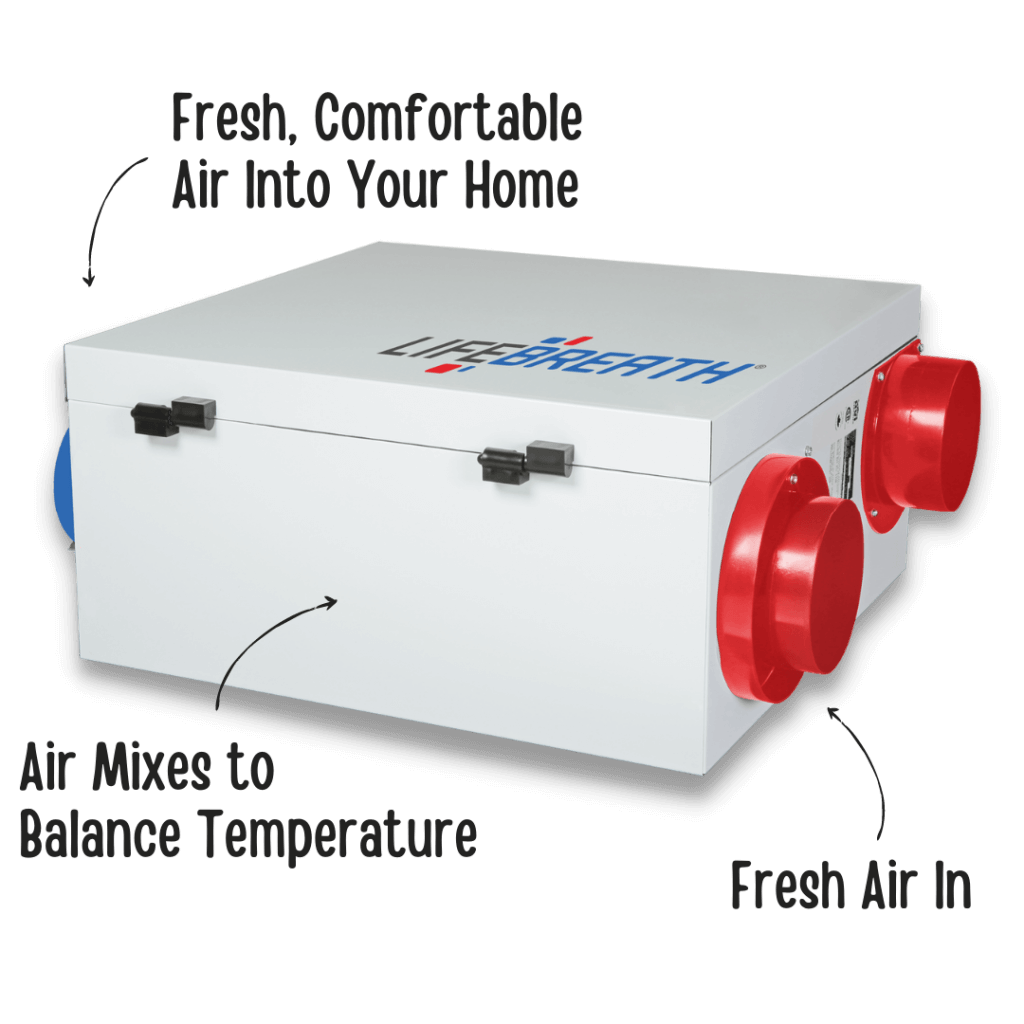How Energy Recovery Ventilators Work
It’s helpful to be familiar with the structure of a typical energy recovery ventilator unit. This device normally contains two separate fans.
Fan #1 – Collects fresh, clean air from outside your living space and pumps it into your home.
Fan #2 – Captures the stale air from inside your home and releases it out into the atmosphere.
To ensure that this process is successful every time, an ERV also makes use of a heat exchanger. The heat exchanger works to transfer moisture and heat from the stale air stream to the fresh air stream. As a result, your home always remains warm or cold depending on the temperature outside and the time of year.
 Q+A: Home Ventilation and Fresh Air Circulation: We want to help you understand everything about home ventilation and indoor air quality. Read our FAQ on fresh air mechanical ventilation. Read the full article →
Q+A: Home Ventilation and Fresh Air Circulation: We want to help you understand everything about home ventilation and indoor air quality. Read our FAQ on fresh air mechanical ventilation. Read the full article →
What Is the Difference Between a HRV and an ERV?
Heat recovery ventilators (HRVs) and ERVs are similar devices that both supply fresh, conditioned air to the home while recovering energy from the stale, outgoing airstream. Both provide excellent ventilation for your home, but they do have their differences.
A HRV only transfers heat while an ERV transfers moisture as well. HRVs ensure that incoming air is as warm as outgoing air. ERVs ensure that incoming air is as warm or cool as outgoing air. These systems give homeowners control over the quality of airflow, rather than relying on inherent leaks or other deficiencies from building construction. In other words, you’ll be comfortable at all times and experience a decrease in utility costs.
 What Ventilation System Is Right for My Home, ERV or HRV? When you’re looking at whole-home ventilation systems, which is better, ERV or HRV? This article will help guide your decision. And, we always recommend consulting a local IAQ expert before making any final decisions. Learn more →
What Ventilation System Is Right for My Home, ERV or HRV? When you’re looking at whole-home ventilation systems, which is better, ERV or HRV? This article will help guide your decision. And, we always recommend consulting a local IAQ expert before making any final decisions. Learn more →

